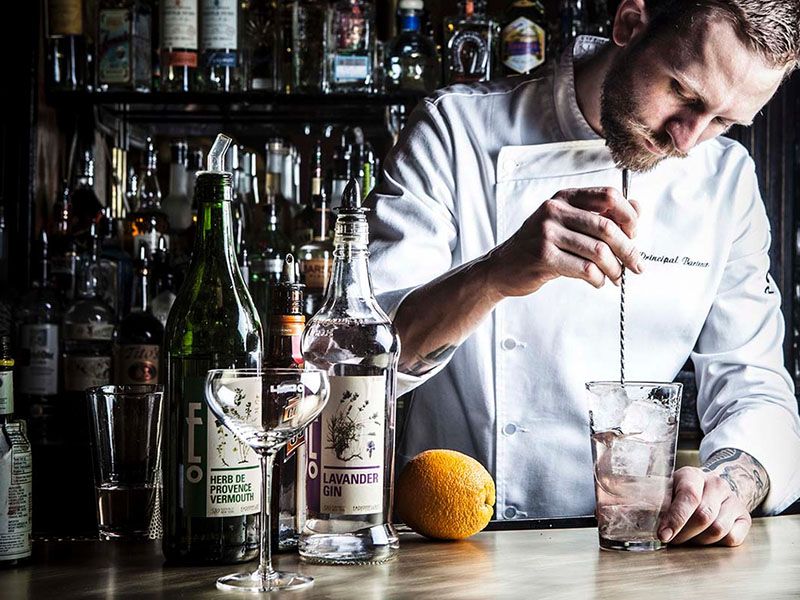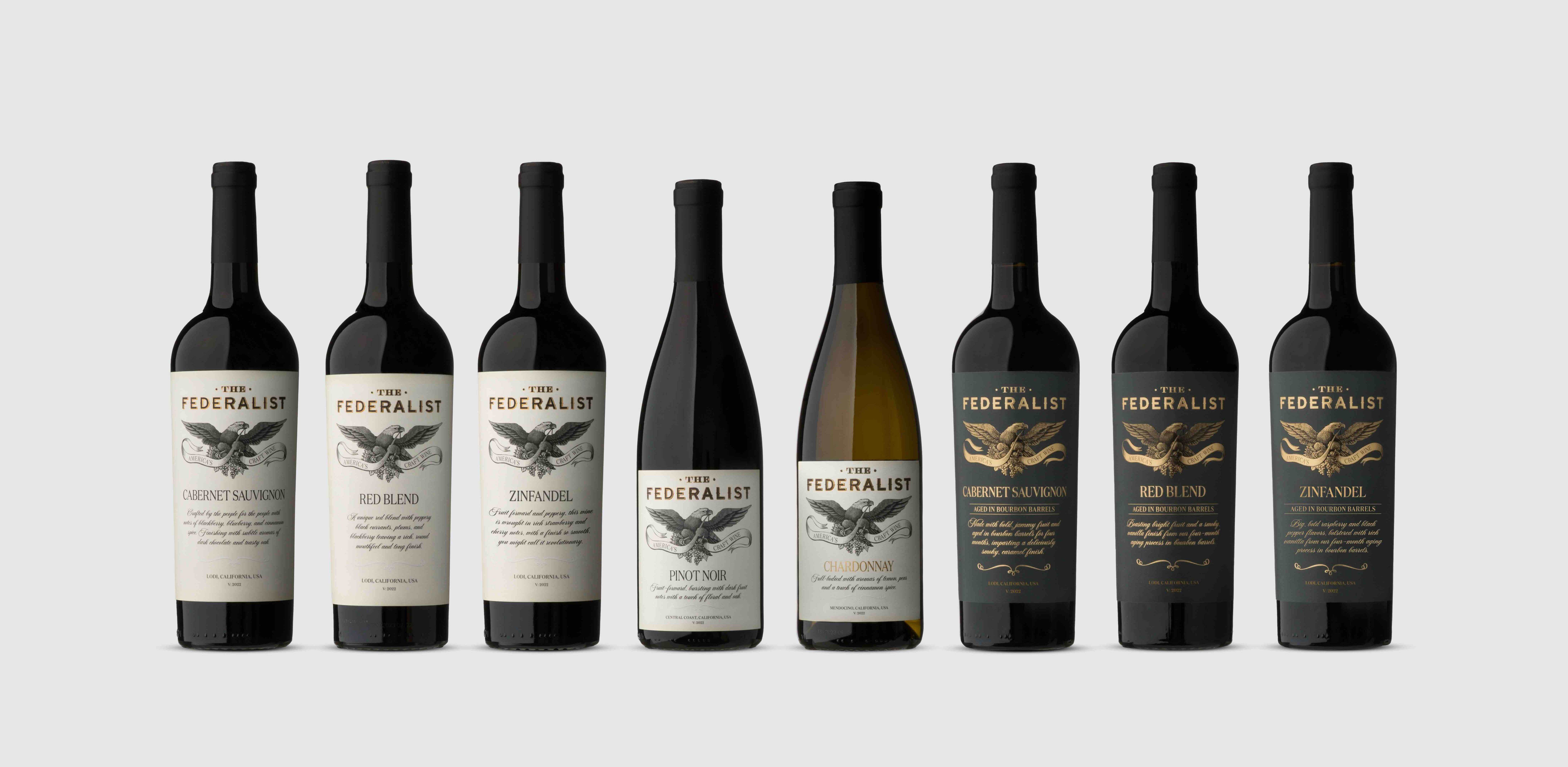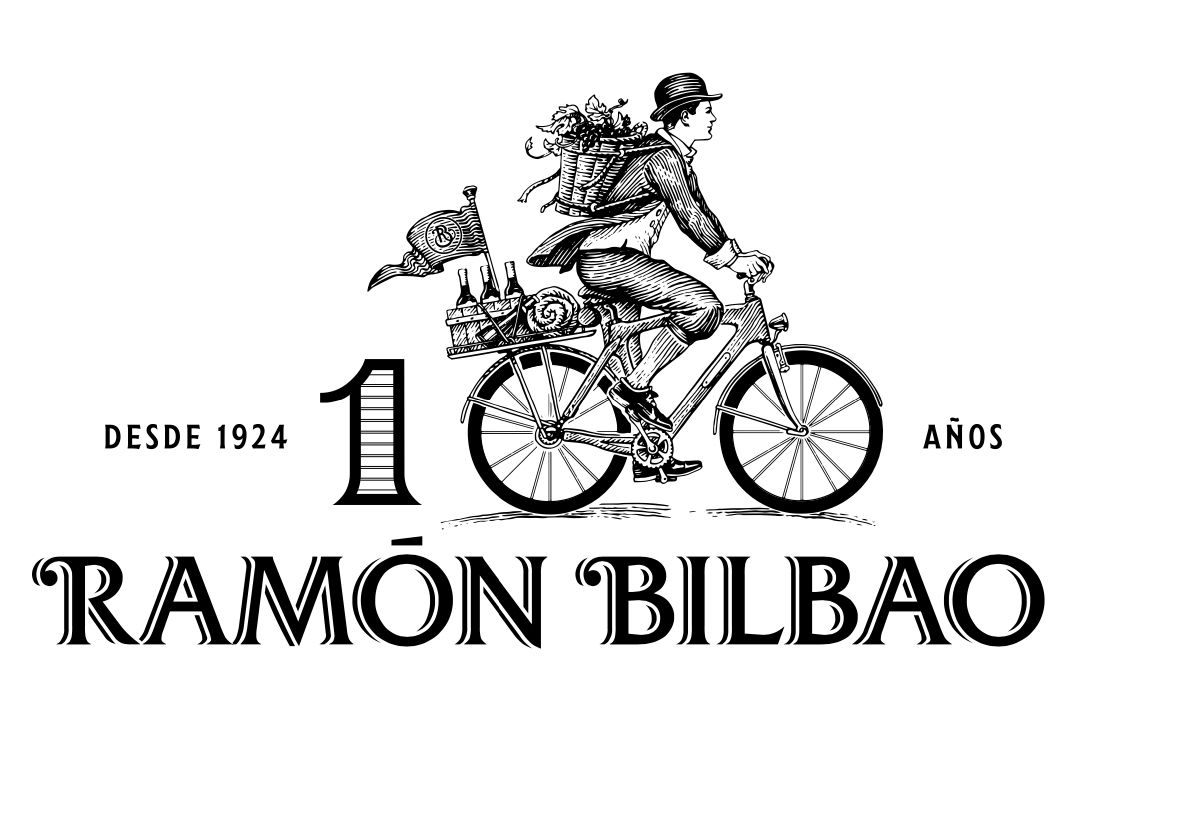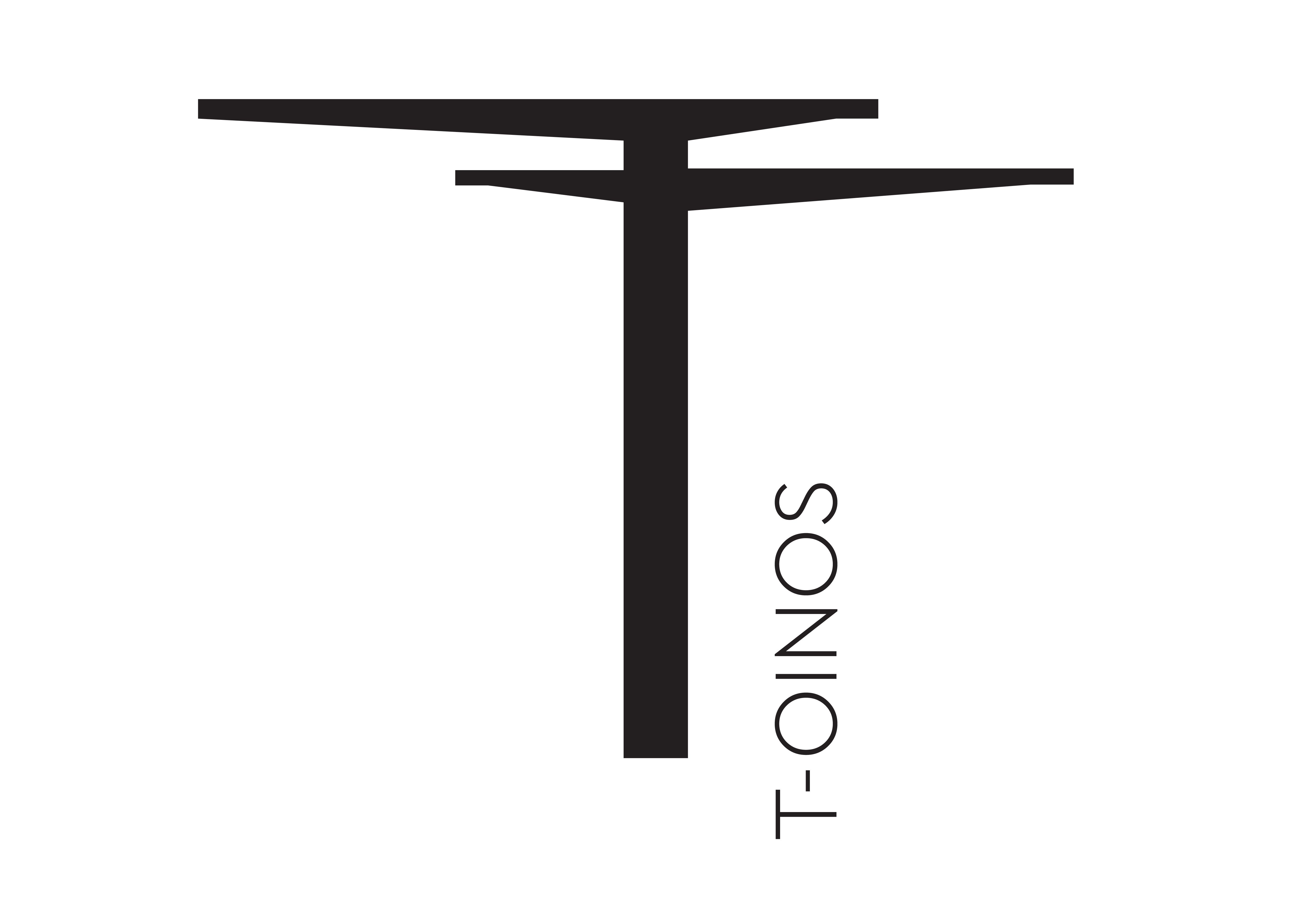Whilst the premium spirits category continues to re-invent itself with new variations on trusted brands and limited editions, the wine fixture remains flat by comparison. But it does not need to be that ways, says Alistair Morrell.
Reflecting on the differences between the two different categories then perhaps no better observation is the comparison between the London Wine Fair and Imbibe. Walking into the former is like walking into a library, which by comparison to the noise, excitement and activity going on into the latter.
This might go some way to symbolise the difference between the wine and spirits markets in the UK currently.
And yet this shouldn’t be so. Declining alcohol volume consumption, a growing cynicism towards over alcohol consumption point towards lower alcohol products suggest lower consumption high ABV distilled products. However a quick look at the numbers sees spirits racing ahead.
William Grant & Sons recently released its 2018 UK Market Report highlighting the key aspects of trading spirits in the UK market.

The back bar is bursting with new premium spirits brands
The key market findings were as follows:
- Spirits is the second largest sector in both the on and off-trade, worth £10.5bn and up +5.3%, and still seeing strong value growth across both channels, ahead of total beer, wine and spirits.
- Total premium spirits are now worth over £1.4bn, up +15.8% and accounting for 12% of all spirits value sales.
- Premiumisation remains a key driver for the spirits market with premium brands accounting for £239m of incremental value compared to last year.
- The on-trade is driving the majority of the spirits sector’s actual value sales growth, while the off-trade is growing at a faster pace year-on-year.
- Over 65% of spirits growth is being driven by gin, although flavoured spiced rum, non-cream liqueurs, and American whiskey are growing strongly.
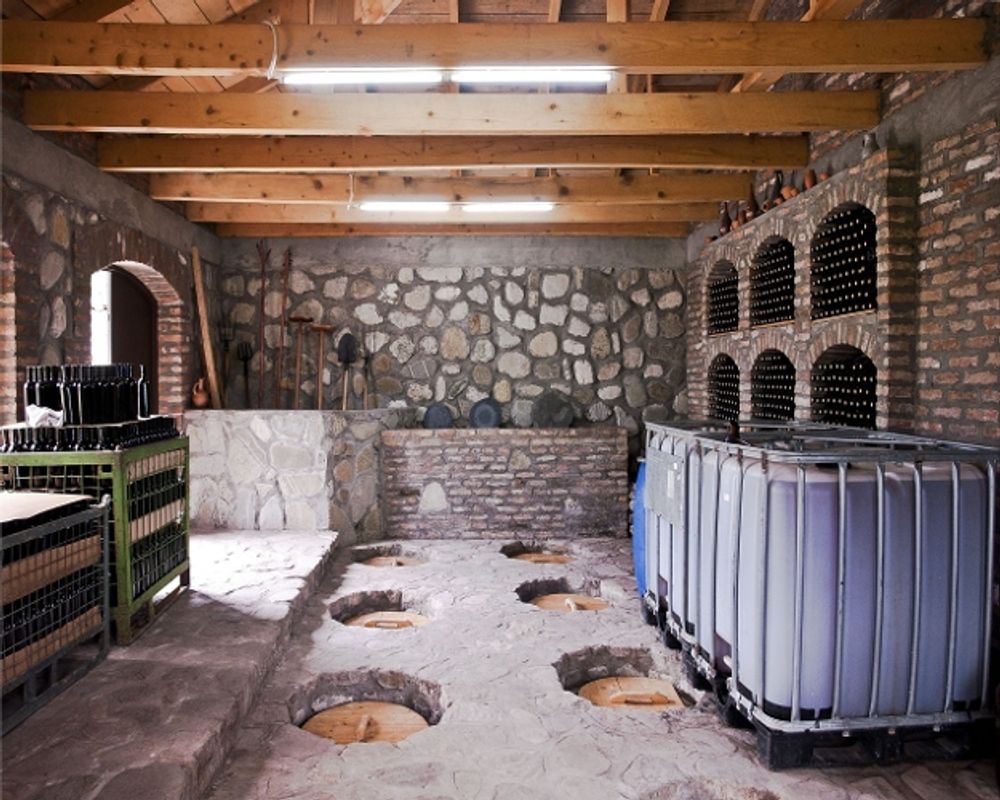
Innovation in wine is more centred around how it is made rather than what it means to the people drinking it
Wine on the other hand is
- Declining in volume by -16% in 10 years and more recently -1% per annum.
- Value growth at 20.9% estimated over 10 years (2011-2021), and more recently reported at around 2.6%
- The off-trade ‘continues to see performance behind general BWS’.
- That said it is still it is the largest single BWS category in the off trade.
Premium spirits are charging ahead in the off-trade, with premium value growth of 18.7%, but it is only 10% of the total category size, according to Grants.
Despite the consistently declining alcohol consumption spirits have retained strong value growth with the premium sectors charging away; whereas wine’s exponential 90/00s volume led growth has disappeared.
Targeting the Active-ist Consumer
Grants detailed market report goes much further in identifying what it calls ‘The Active-ist Consumer’. These consumers are determined to use their three defining characteristics to maximum effect in the market.
- Data mining – digital sophistication
- Impact purchasing – knowing the power of their wallet, WiFi and connections
- Experience optimising – sustainability and social good are powerful motivators.
Wine continues to struggle to identify its consumers. With a growing requirement for social media ‘shares’ whenever the Gen Z and Millennials are out, cocktails are better placed for the Instagram/social media attention grabber.
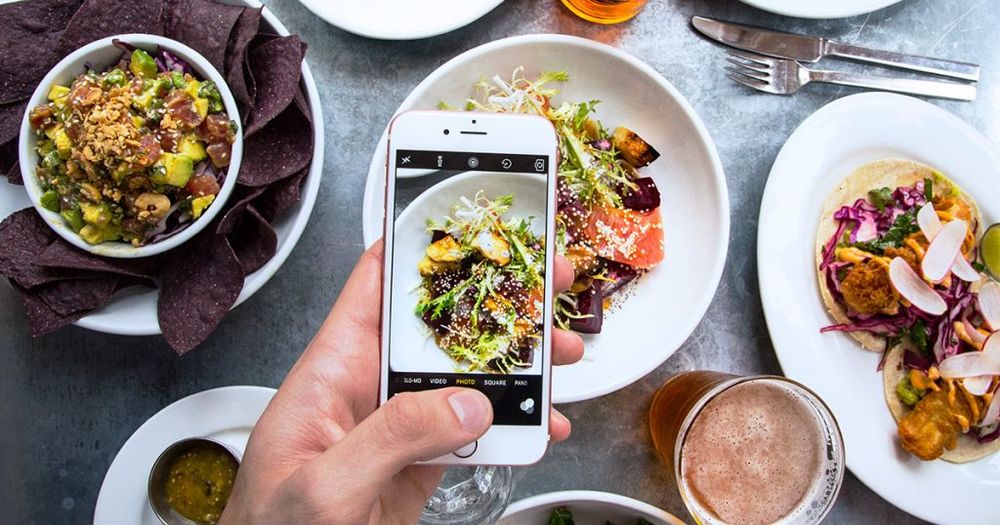
Younger consumers, diners and drinkers want to go out and find “Instagram” moments
Seven key consumer trends
According to Grants these characteristics are driven by seven lifestyle trends
- Always optimised: moving beyond pleasure denial to identify optimalexperiences using the power of data and tech to identify the best products for the moment.
- Rooted realness: exploring the ethical ramifications of their food and drink choices with veganism and vegetarianism becoming more prevalent.
- Multi sensory masstige: experiences remain the best way that brands can differentiate and develop their interface with consumers.
- Dreams of extremes: ehancing social standing by embracing moments that transport them well outside their comfort zones.
- Augmented crafts: ‘hometertainment’ shifting from in-home experiences to the tech-enabled, ‘Augmetned Craft’ space, where enhanced establishment on-trade service creates unique experiences through a mix of ingredients, craft and tech.
- Tangible transparency: brands that share consumers values and beliefs across every aspect of business.
- Considered living: combining high-speed gratification with paradoxical realistion that they need to find balance in their always-on lives.
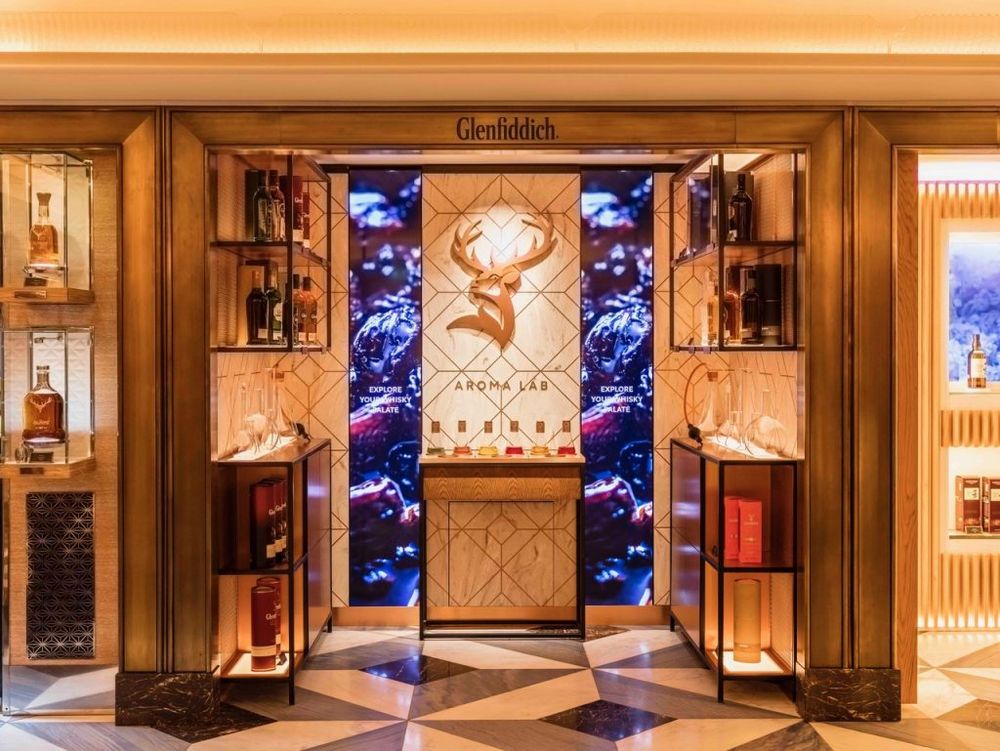
Here’s how Glenfiddich shows how unique its brand with this interactive aroma lab in Harrods
The consumer is moving fast and trends are created in their wake. It is clear that drinks companies as they fight for discretionary spend have to compete for their attention in order to have a chance of take a share of their wallet.
Casper MacRae, William Grant’s marketing director says it is even more important that brands find a way “to engage with these consumers”, they “must strive to offer food and drink experiences that are not just luxurious, but challenge consumers’ minds, bodies and senses”.
When it comes to wine, there is little identification of consumer trends, beyond natural, biodynamic, organic and what consumers are spending their money on. Probably the best examination is to look at the wine being shown across the stands exhibiting at LWF. Most brands sell by terroir. Sure terroir is individual, in fact it is easy. Everyone’s terroir is individual, where I am writing this from is unique.
It is also lazy. There is no direct or easy line connection between terroir and taste, there maybe suggestions and plays on imagination, but does that equal proof? Only in market activation and consumer engagement.
The luxury market
A focus on the premium nature of the market reveals some interesting facts, says Grants,.
Consumers under 40, who are reaching income and spending maturity, and who make regular and more frequent luxury purchases are driving the majority of luxury growth. They exert a growing influence on the trends of this sector. However the over 50’s should not be ignored, as they still account for the larger proportion of luxury spend. It is also worthy of note that ultra high net worth individuals see privacy including data privacy as a key issue in maintaining and growing their wealth.
Luxury is being redefined and may not be defined by the assets that we own, but the experiences that consumers have had and can share.
Personalised choice, combined with luxury tech that allows brands to connect with their customers using multi-sensory techniques can all contribute to the higher level experiences that people are looking for. The aim is always to surprise and delight your consumers.
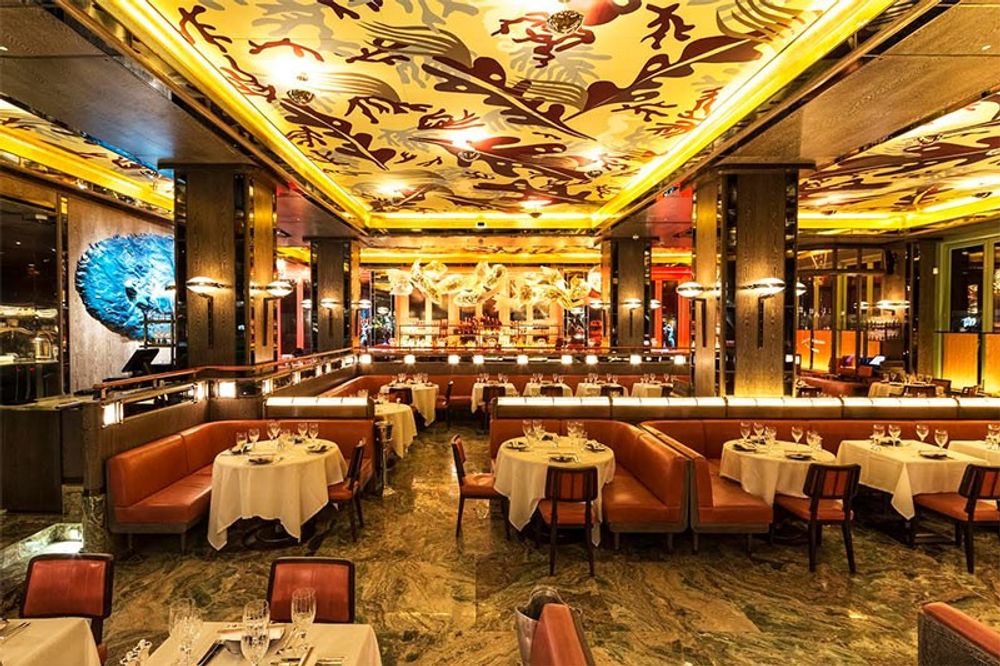
Restaurants like Sexy Fish are looking at more ways to attract luxury diners
In the off-trade in-store theatricals, including interactivity, are important in offering that entertainment aspect, providing it is consistent with the brand proposition to consumers. In the on-trade we are seeing more ways that restaurants are looking to attract luxury customers, like a beautiful recipe book and bespoke glassware at Sexy Fish restaurant in London’s Mayfair.
How much are wine and wine brands concentrating consciously on this sector? Hedonism, sure, but other more provincially based outlets for wine still seem to make a feature of their ‘down at heal-ness’. How special is the wine environment and how special does it make its customers feel.
How to do it?
The UK is a highly mature internet market with almost 100% penetration among adults 54 years or younger, with 82% using it daily. But analyse what they are using it for: 76% of UK adults use the internet to source goods, 63% use it for social networking and 30% of all time is spent on social, 50% of which is on a mobile device.
All of which should be motivating consumer businesses to identify where the consumers are and how to get to them more consistently.
Now let’s look at the spirits category more closely. Over 65% of sprits growth in the UK was driven by gin in the last year. Gin is a sensational category, which has grown from almost nothing, with 82 new entrants in the UK market in 2017.
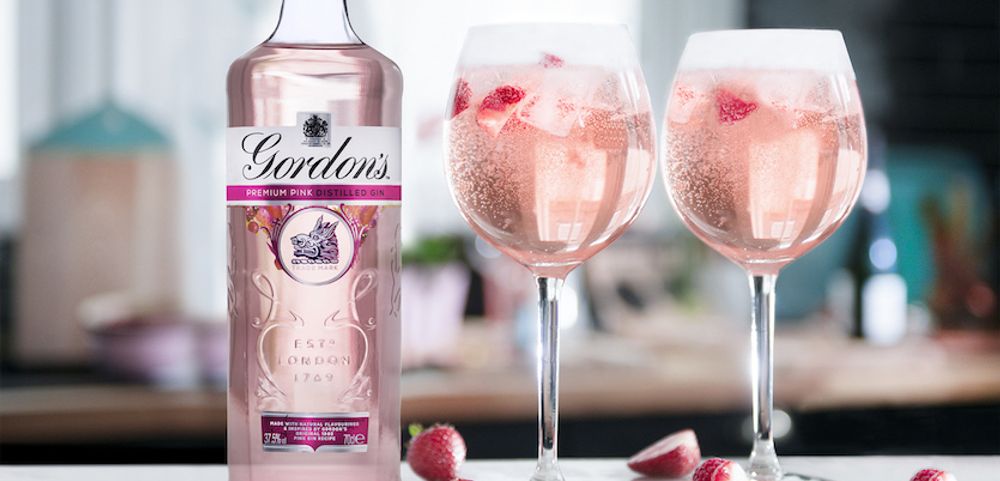
The success of Gordons Pink Gin shows how the spirits category is so open to innovation
Even in a saturated market, when most commentators were predicting a slow down in gin sales, along came Gordon’s Premium Pink Gin created sales of £28.5m in eight months. It is one of the biggest spirits NPD successes in a decade. It seems that the more theatrical that producers can make their botanical constituents in their gin, the more success they have.
Now let’s look at Prosecco which has single handedly driven wine growth in recent years – by some 89.9% between 2011 and 2021, according to the IWSR 2018 report. Yet this is a category dominated by supermarkets, with many anonymous labels sold at the cheapest price possible. There is little recognition of differences in style, let alone uniqueness.
When did wine last have a £28.5m brand launch in less than a year which was openly reported and celebrated?
Need to be relevant
Spirits as a category has been through its difficult years. Declining volumes, bad PR, closing distilleries and many other things. But, as a whole, it has found a way to maintain a relevance with contemporary consumers, which is the envy of many.
Wine on the other hand runs the risk of falling between stools, squeezed by craft beer, and the infinitesimal ways that spirits brands are entertaining their consumers in ways they never expected, and on occasions that make them feel special.
Wine can learn much from spirits story telling, their endeavours to seek out and engage the consumer on detailed levels. But more than anything wine needs to develop valuable experiences that consumers are willing and happy to pay for, creating a market thriving on innovation and progression.
As The Buyer has pointed out before innovation is more than what is in the bottle
Can the UK wine market reflect on the same currently?
- Alistair Morrell – aka The Wine Inspector – is a drinks industry consultant, journalist and commentator. He has over 30 years as a drinks industry professional which he shares with growers, importers, distributors and buyers. You can follow him at @inspectorwine.
